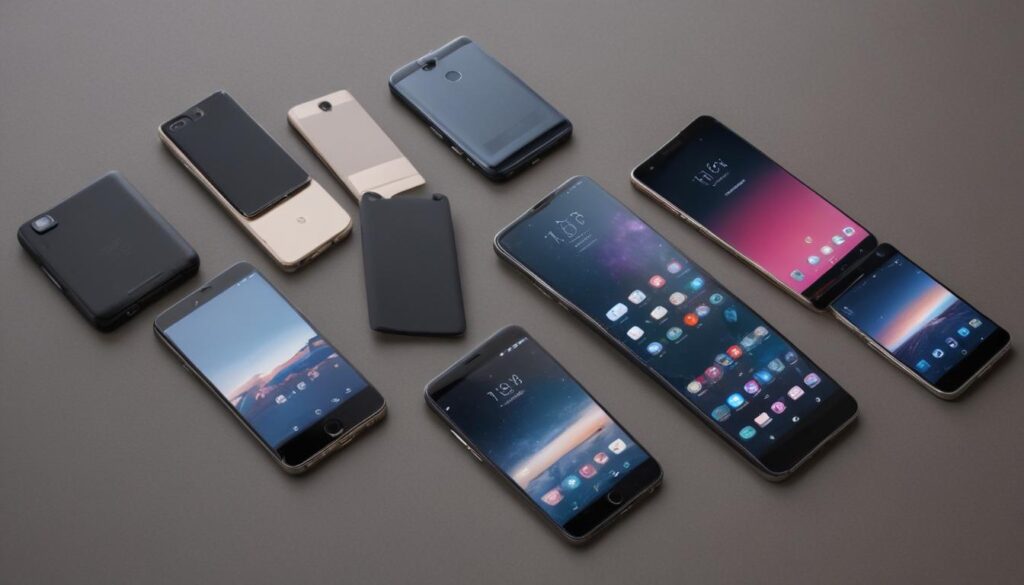Now Reading: Mind Voice Gesture The Future of Control
- 01
Mind Voice Gesture The Future of Control
Mind Voice Gesture The Future of Control

The Future of Human-Computer Interaction
Does your neck ache from looking down at a screen all day? Do you ever feel like the endless clicking, typing, and swiping is a clumsy and inefficient way to translate your brilliant ideas into digital reality? We live in a world of incredible technological power, yet the way we access it often feels stuck in the past. We are forced to conform to the rigid language of our devices, using keyboards and mice as crude translators for our complex thoughts. This friction between human intent and digital execution is a universal pain point. But what if technology could learn to speak our language instead? The future of human-computer interaction (HCI) is not about better keyboards or more responsive touchscreens; it is about demolishing the interface altogether and creating a seamless bridge between our minds and our machines.
This evolution is already underway, promising a future where our interactions with technology are as natural as breathing. Instead of consciously commanding a device, imagine your environment simply responding to your needs. This is the new paradigm of HCI, a shift from explicit commands to intuitive, multi-modal communication. It’s a world built on voice, gesture, and eventually, even thought. Get ready to leave the clunky interface behind as we explore the technologies that are fundamentally reshaping our relationship with the digital world, making it more human, accessible, and deeply integrated into the fabric of our lives.
From Clunky Commands to Natural Conversation
For decades, our relationship with computers has been defined by a series of revolutionary but ultimately restrictive interfaces. We graduated from the cryptic world of text-based command lines to the graphical user interface (GUI), a world of windows, icons, and pointers navigated by a mouse. Then came the touchscreen, which brought a new level of direct manipulation to our fingertips. Each step was a monumental leap forward, making technology more accessible to the masses. However, they all share a common limitation: they are explicit input methods. We must physically tell the machine exactly what to do, step-by-step, using a pre-defined set of actions.
This process creates a significant bottleneck. The speed of human thought is vast and non-linear, while the actions of clicking and typing are slow and sequential. This mismatch causes cognitive friction and physical strain, forcing us to constantly translate our fluid intentions into rigid digital commands. It is a one-way conversation where we do all the talking in a language the computer understands. The future of HCI aims to flip this dynamic, creating a two-way dialogue where technology understands us through our most natural forms of expression, making the computer an extension of our will rather than a tool we must wrestle with.
The Technologies Shaping Our Digital Tomorrow
The journey toward a more natural digital existence is being paved by several groundbreaking technologies that are converging to create entirely new experiences. These are not science fiction concepts; they are the active frontiers of development at the world’s leading technology companies and research labs. They represent the building blocks of an ambient computing future where the computer as a distinct object fades into the background.

Voice and Conversational AI
The most familiar of these new frontiers is voice. Assistants like Siri, Alexa, and Google Assistant have brought conversational AI into millions of homes, normalizing the act of speaking to our technology. Right now, these interactions are often simple command-and-response exchanges, like asking for the weather or to play a song. However, the underlying technology is rapidly evolving from a simple command processor into a true conversational partner. AI models are becoming sophisticated enough to understand context, follow complex conversational threads, and even discern emotional tone.
The true potential of voice interaction extends far beyond simple queries. Imagine dictating a complex report to an AI that not only transcribes your words but also formats the document, fact-checks information, and suggests structural improvements in real-time. Picture a creative brainstorming session where you and an AI collaborator verbally build on each other’s ideas. In this future, voice becomes a primary method of creation and control, allowing us to interact with complex systems, from our smart homes to sophisticated software, with the same ease as talking to a human assistant. It removes the physical barrier of the keyboard and unleashes a higher bandwidth of communication.
Gestural Control and Spatial Computing
While voice liberates our words, spatial computing liberates our physical presence. Technologies like augmented reality (AR) and virtual reality (VR) are moving computing from the flat, 2D world of the screen into the 3D space we inhabit. With devices like the Meta Quest or Apple Vision Pro, the primary interface is no longer a mouse or a touchscreen; it’s our hands, our eyes, and our body’s position in space. This is gestural control, the ability to manipulate digital information as if it were a physical object. You can grab a virtual engineering model, stretch it, turn it over, and walk around it.
This shift is profoundly impactful because it aligns our digital interactions with a lifetime of experience interacting with the physical world. It’s an intuitive leap that requires no instruction manual. For a surgeon, it means practicing a complex procedure on a photorealistic 3D hologram before ever touching the patient. For an architect, it means walking through a full-scale model of their building and making changes with a flick of the wrist. Spatial computing makes data tangible and work collaborative in a way that a shared screen never could. It blends the digital and physical worlds, allowing information to be overlaid onto our reality, ready to be interacted with through the most natural tools we have: our hands.
Preparing for a More Human Future
The ultimate goal of all these advancements is to achieve a state of ambient computing, where technology is so deeply and invisibly woven into our environment that we cease to notice it. The computer will no longer be a device we go to, but a pervasive intelligence that supports us. Your home, car, and office will become context-aware environments that anticipate your needs and respond to subtle cues from your voice, gestures, and behavior. This isn’t about creating a world full of distracting gadgets; it’s about creating a world with less technological friction, freeing up our cognitive energy for what truly matters: creativity, problem-solving, and human connection.
This transformation represents one of the most significant shifts in technology since the invention of the personal computer. It promises to make the digital world more accessible to everyone, regardless of technical skill or physical ability. By moving beyond the screen and the keyboard, we are not just inventing new gadgets; we are fundamentally changing our relationship with information and computation. We are on the cusp of an era where technology finally adapts to us, unlocking a level of productivity and creativity we are only just beginning to imagine. The future of human-computer interaction is, in essence, more human.



































